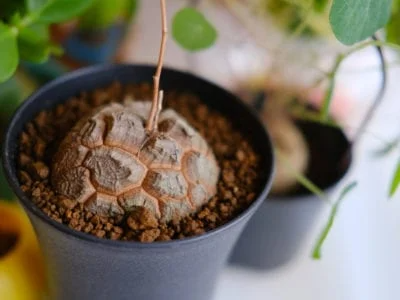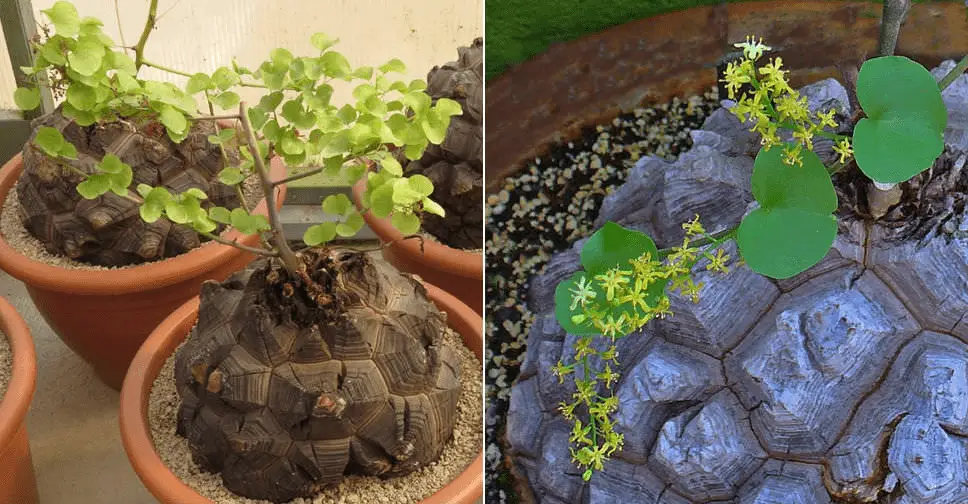If you're a plant lover, you've probably come across the tortoise plant (also known as the turtle vine or Peperomia prostrata) at some point. With its small, round leaves and adorable name, it's hard not to be charmed by this plant. In this blog post, we'll take a deep dive into the world of the tortoise plant, exploring what it is, how to care for it, and how to grow it.

What is a Tortoise Plant?
The tortoise plant is a low-growing, trailing plant native to South America. It belongs to the Peperomia family, which contains over 1,000 species of small, tropical plants. The tortoise plant is known for its round, green leaves that are about the size of a dime. The leaves are slightly succulent, which means they can store water and don't need to be watered as often as some other plants.
The tortoise plant is also known for its cute, turtle-like appearance. The leaves are arranged in a way that makes them look like a turtle's shell, complete with a small stem that resembles a turtle's head. This unique appearance has made the tortoise plant a popular choice for plant lovers looking for something a little different.
How to Care for a Tortoise Plant
If you're considering adding a tortoise plant to your collection, it's important to know how to care for it properly. Here are some tips to help you keep your tortoise plant happy and healthy:
Lighting
Tortoise plants prefer bright, indirect light. They can tolerate some direct sunlight, but too much can cause their leaves to burn. If you notice that your tortoise plant's leaves are turning yellow or brown, it may be getting too much sunlight.
Watering
As mentioned earlier, tortoise plants are slightly succulent and can store water in their leaves. This means they don't need to be watered as often as some other plants. In fact, overwatering is one of the biggest mistakes you can make with a tortoise plant. Wait until the top inch of soil is dry before watering, and be sure to allow any excess water to drain away.
Humidity
Tortoise plants prefer a humid environment, but they can tolerate lower humidity levels. If the air in your home is particularly dry, consider using a humidifier or placing a tray of water near your plant to help increase the humidity.
Soil
Tortoise plants prefer well-draining soil that is rich in organic matter. Avoid using heavy soils that hold onto moisture, as this can lead to root rot. A good soil mix for a tortoise plant might include peat moss, perlite, and vermiculite.
Fertilizer
Tortoise plants don't need a lot of fertilizer, but a little can help them grow and thrive. Use a balanced fertilizer once a month during the growing season (spring and summer), and avoid fertilizing during the winter when the plant is dormant.
Growing a Tortoise Plant

If you're interested in growing your own tortoise plant, there are a few things you should know. Here are some tips to help you get started:
Propagation
Tortoise plants are easy to propagate, which means you can create new plants from cuttings of your existing plant. To propagate a tortoise plant, simply take a stem cutting that includes at least one leaf and one node (where the leaf meets the stem). Place the cutting in water or moist soil and wait for it to root. Once it has rooted, you can plant it in a pot and watch it grow.
Potting
When potting your tortoise plant, choose a container that is just slightly larger
than the plant's root system. This will help prevent overwatering and ensure that the soil doesn't stay too moist. You can also use a pot with drainage holes to allow excess water to escape.
Training
Because tortoise plants are trailing plants, they can be trained to grow in a certain direction. To train your plant, use a stake or trellis to guide the stems in the direction you want them to grow. This can help create a more uniform and attractive appearance.
Pruning
Regular pruning can help keep your tortoise plant looking neat and tidy. Use clean, sharp scissors or pruning shears to trim back any overgrown stems or leaves. You can also pinch back the tips of the stems to encourage bushier growth.
Pests and Diseases
Like any plant, tortoise plants are susceptible to pests and diseases. Common pests that can affect tortoise plants include spider mites, mealybugs, and scale insects. To prevent these pests, keep your plant clean and free from dust, and inspect it regularly for signs of infestation. If you do notice pests, treat your plant with an insecticidal soap or neem oil spray.
The tortoise plant is a unique and charming plant that is sure to delight any plant lover. With its cute, turtle-like appearance and easy care requirements, it's a great choice for beginners and experienced plant parents alike. Whether you're looking to add a touch of whimsy to your plant collection or want to propagate your own tortoise plants, following the tips outlined in this blog post will help you keep your plants healthy and thriving. So why not give the tortoise plant a try and see what all the fuss is about?



















